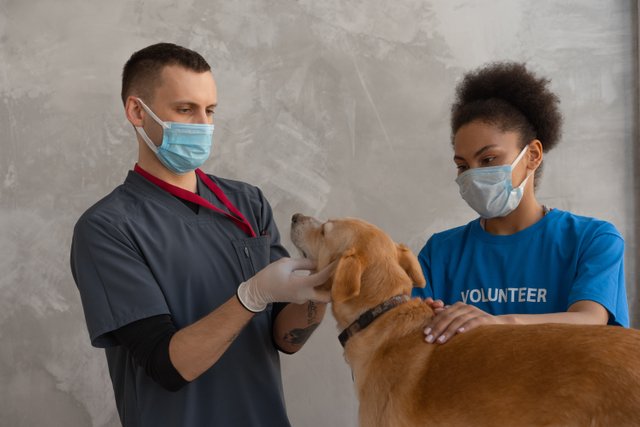
Image via: Pexels
There are so many things to love about dog ownership. However, there are a few stressful things that owners will have to deal with every now and again. Namely, the fact that dogs will need to visit the vet.
Dogs that aren’t accustomed to visiting the vet may stress and fret the whole time. This can cause undue upset to both owners and dogs alike. However, the vet cannot be avoided altogether.
In fact, dogs should visit the vet at least once a year for routine checkups. Rather than causing extreme stress, owners can employ a few simple tips and tricks to help make future visits to the vet stress-free.
8 tips to help ease your dog’s vet related stress
For some dogs, visiting the vet is their worst nightmare. Being touched by strangers, sitting near other animals and hearing a myriad of different sounds can prove quite overwhelming. For owners, witnessing this stress is enough to prolong vet visits for as long as possible.
However, visiting the vet is imperative to your dog’s overall health and wellbeing. Proactive vet visits can go a long way towards identifying potential issues and beginning treatment before they become more serious.
With this in mind, it’s important to take your dog to the vet for routine examinations. To ensure a stress-free visit, owners can employ a few simple tips and tricks that will work to support their doggo.
1. Get them accustomed to being handled
When visiting the vet, dogs may be handled by a variety of different people from workers on the reception desk to nurses and vets. As such, being touched by strangers and examined may cause stress.
To avoid this, try and get your dog used to being touched from a young age. Try to massage the dog in areas such as the paws, ears, mouth, belly and even tail. This essentially mimics a vet’s exam and gets your dog used to being handled and touched.
2. Teach basic commands
There are a lot of different stimulants in a vet’s office that can cause your dog to stress or act out. By teaching your dog basic commands, you can ensure that they know how to behave properly.
Basic commands include behaviours such as sit, stand and stay. Inherently knowing these commands will also help when interacting with the vet. An examination is always best conducted in a standing position.
3. Pop in to the vet
For some dogs, even the journey to the vet can induce stress. Rather than only putting your dog in the car to go to the vet, try to visit the shops, beach or park in the car as well. This means that their journey to the vet won’t be stressful.
With this in mind, also try to take your dog to the vet just to say hello. This works wonders because dog’s often associate the vet with a bad experience or being sick. By visiting the vet just because, anxiety can ease.
4. Have a bag of supplies
Bringing creature comforts to the vet can also help ease stress and anxiety. A treat here and there, a blanket from home or even their favourite toy can go a long way towards making your pet feel comforted.
5. Exercise your pooch before the vet
Dogs are very energetic creatures. This energy can sometimes feed anxiety. With this in mind, try to take your dog for a walk or run before a vet appointment. This can tire your pet out which works to decrease stress levels.
6. Be smart with food
Dogs can be very motivated by food. Instead of feeding them before heading to the vet, try to hold out. This way, when they’re at the vet, you can use treats as a motivating factor for good behaviour.
7. Ask for an early appointment
Rather than stressing all day or waiting in a reception area for hours, ask for an early appointment. This way, exposure to potentially stress inducing factors is limited, for both you and your doggo.
8. Consider waiting outside
For some dogs, being surrounded by other animals can provoke feelings of stress. To limit this emotional response, consider waiting outside for your vet. From there, the receptionist can escort you into the vet’s office when your vet is ready to begin the appointment.
Visiting the vet with your furry friend
All owners want to do the right thing by their pet. Seeing your dog so upset by vet checkups or the waiting room experience might resolve you to limiting exposure to the vet altogether. While this may reduce small periods of anxiety, avoiding the vet can be harmful long term.
With this in mind, to ensure your dog is receiving the best care possible, it’s important to try and reduce the stress associated with visiting the vet. While this might seem like an uphill battle, it’s well worth it.
By employing a few simple tips and tricks, owners can make the vet a neutral experience of the doggos. This means that your dog has access to medical treatment and preventative care without the stress.